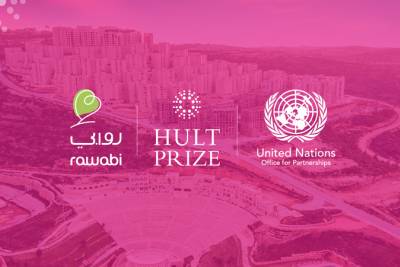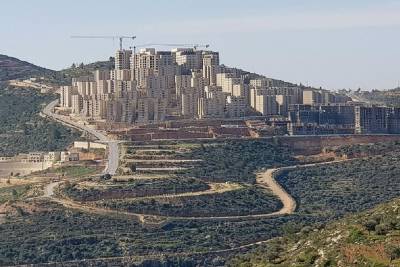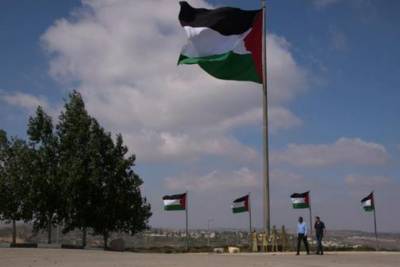In Rawabi
LRB blog - Patrick Sykes - Even through the rose tint of my 3D glasses, the architects’ rendering of Rawabi is a dizzying sight. Their animated introductory film swoops down on the central square, where men sit with shisha pipes in one hand and iPads in the other, glamorous women go shopping, young couples stroll by, businesspeople talk on the phone, and boys and girls (with and without the hijab) play football together. At a cost of $1.2 billion, Rawabi will be Palestine’s largest ever private sector project, and its first planned city. It’s the brainchild of the US-Palestinian multimillionaire Bashar Masri, who is funding it with backing from Qatar.
In a few years, its 23 neighbourhoods will house 40,000 people, many of them attracted by the promise of new jobs in IT, education and healthcare. Apartment prices range from $80,000 to $220,000; everyone from wealthy professionals to the labourers building them have shown an interest. Six neighbourhoods are now finished, and the owners of apartments in the first two – sold at a knockdown price to get things started – have moved in.
The first phase of construction was finished in mid-2014, but the houses were empty for more than a year because Israel had refused to connect the city to the water network. It’s built on Area A of the West Bank, over which the Palestinian Authority has full control, but Rawabi’s pipes and roads go through Area C, where Israel oversees planning and security. The Israeli army may not be able to enter the city, but it can turn off the taps and block the access road at will.
Rawabi has been sold as a new Palestinian dream. The architects’ film calls it a ‘modern city’, a ‘free city’, the ‘perfect life experience’. On the ground, that translates into five-star hotels, a shopping centre ‘built in the Palestinian style’, seven cinema complexes and the largest amphitheatre in the Middle East. There’s a shortage of both housing and jobs across the West Bank, but Rawabi seems to cater for a very particular elite demographic. And its modernity looks curiously like isolation. There are separate roads for residents and visitors, and as the saleswoman who showed me round put it, ‘we provide everything you need, so you won’t have to leave.’
Ramallah is less than ten kilometres to the south, but it feels a world away. ‘Ramallah is a bubble and it’s about to explode,’ Maha, who lives in the de facto capital, told me. ‘Whatever happens here, they’ll be safe there. You won’t see chaos, you won’t see politics. It’s just a neighbourhood.
Can you imagine children growing up there? They’ll think we live in peace.’ Palestinians are already isolated from the world by the occupation; Rawabi will isolate them from each other, under the glossy banner of a ‘free city’.
Residents will even be shielded from their neighbours, behind sound-insulating paint and bulletproof doors with seven locks. There is a range of wood effects to choose from. All pipes, cables and rubbish are hidden out of sight, either underground or behind closed doors; Arab towns and villages elsewere in the West Bank have water tanks on the roofs of the houses, unlike Israeli settlements, which are serviced by the Israeli state. The neighbouring communities – both Israeli and Arab – have been cropped or omitted from Rawabi’s many maps and aerial animations, which instead place the city in empty land, echoing the Zionist myth of Palestine as a ‘country without a people’. None of the 6000 houses will have a view of the Ateret settlement on the next hill.
Rawabi has been criticised for resembling an Israeli settlement with its high-rise buildings and radial boulevards. The name means ‘the hills’: throughout the West Bank, hilltops have become the reserve of settlements that claim dominion over the Arab villages below. Whether to emulate or to challenge them, Palestine’s most ambitious entrepreneurs have adopted the logic of their occupiers.
To view original article, Click Here.



